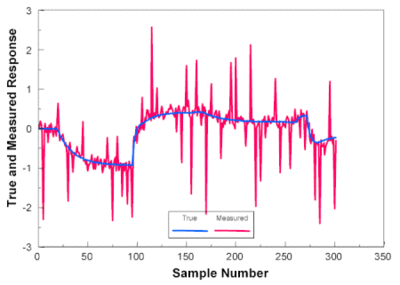Electromagnetic interference

Electromagnetic interference a.k.a. EMI (also called radio-frequency interference or RFI) is disturbance that affects an electrical circuit due to either electromagnetic induction or electromagnetic radiation emitted from an external source. The disturbance may interrupt, obstruct, or otherwise degrade or limit the effective performance of the circuit. These effects can range from a simple degradation of data to a total loss of data.[2] The source may be any object, artificial or natural, that carries rapidly changing electrical currents, such as an electrical circuit, the Sun or the Northern Lights. [1]
See more at Wikipedia: http://en.wikipedia.org/wiki/Electromagnetic_interference
Coupling methods[edit | edit source]
Most common methods of EMI transfer from source to victim are:
- Radiation as electromagnetic radiation
- Magnetic coupling
- Capacitive coupling
- Common-mode impedance coupling
Capacitive coupling in motor control[edit | edit source]
In motor control applications capacitive coupling is the most common cause for EMI problems. Capacitive coupling occurs when unshielded conductors are in each other's proximity and source conductor is carrying voltage signal with high slew rate (dv/dt). Example of such source is the motor leads carrying high voltage PWM signal.
Countermeasures[edit | edit source]
The most effective methods of suppressing this noise are:
- Use shielded conductor and tie cable shield to stable voltage potential such as earth. Cable shield provides Faraday's cage that attenuates the radiating electric field of internal conductors.
- Use EMI suppression cores near the EMI source. For best efficiency, run only interfering signals through core and leave cable shield and possible earth conductor outside the core.
See more at: http://www.electrical-installation.org/enwiki/Capacitive_coupling
In no event the Product Information or parts hereof shall be regarded as guarantee of conditions or characteristics. The Product Information or any part thereof may also not be regarded as a warranty of any kind. No liability of any kind shall be assumed by Author with respect to Product Information or any use made by you thereof, nor shall Author indemnify you against or be liable for any third party claims with respect to such information or any use thereof.
As content of this Wiki may be edited by user community, Granite Devices Oy or it's affiliates do not take any responsibility of the contents of this Wiki. Use information at your own risk. However, Granite Devices staff attempts to review all changes made to this Wiki and keep information trustworthy.
Without written consent, Granite Devices' Products or Intellectual Property shall not be used in situations or installations where living beings, material property, or immaterial property could be harmed by the operation, features or failures of Product. Products may only be used in a way where hazards like moving parts, electric shock, laser radiation, or fire can't be realized even if the content of this Wiki would suggest otherwise.